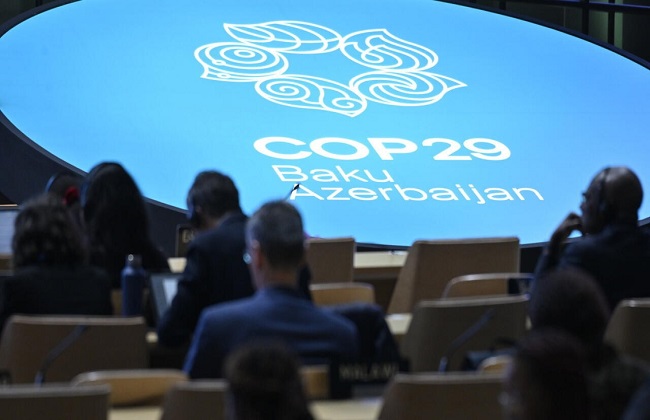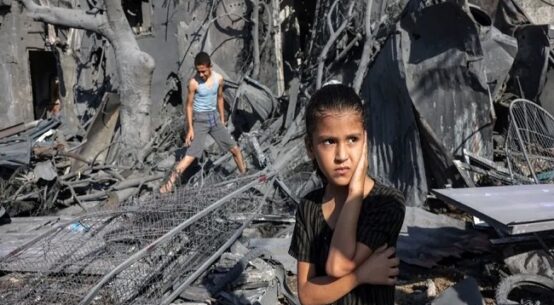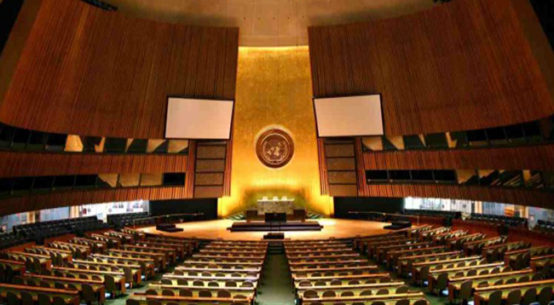
A new draft of a deal on cash to curb and adapt to climate change released Friday afternoon at the United Nations climate summit pledged $250 billion by 2035 from wealthy countries to poorer ones. The amount pleases the countries who will be paying, but not those on the receiving end.
The amount is more than double the previous goal of $100 billion a year set 15 years ago, but it’s less than a quarter of the number requested by developing nations struck hardest by extreme weather. But rich nations say the number is about the limit of what they can do, say it’s realistic and a stretch for democracies back home to stomach.
It struck a sour note for developing countries, which see conferences like this one as their biggest hope to pressure rich nations because they are absent at meetings of the world’s biggest economies.
“Our expectations were low, but this is a slap in the face,” said Mohamed Adow, from Power Shift Africa. “No developing country will fall for this. They have angered and offended the developing world.”
The proposal came down from the top, the presidency of U.N. climate talks – called COP29 – in Baku, Azerbaijan. Delegations from numerous countries, analysts and advocates were kept in the dark about the draft until it dropped more than a half a day later than promised, prompting grumblings about how this conference was being run.
“These texts form a balanced and streamlined package for COP29,” The Presidency said in a statement. “The COP29 Presidency urges Parties to study this text intently, to pave the way towards consensus, on the few options remaining.”
This proposal, which is friendly to the viewpoint of Saudi Arabia, is not a take-it-or-leave-it option, but likely only the first of two or even three proposals, said Climate Analytics CEO Bill Hare, a veteran negotiator.
“We’re in for a long night and maybe two nights before we actually reach agreement on this,” Hare said.
Just like last year’s initial proposal, which was soundly rejected, this plan is “empty” on what climate analysts call “mitigation” or efforts to reduce emissions from or completely get off coal, oil and natural gas, Hare said.
The frustration and disappointment at the proposed $250 billion figure was palpable on Friday afternoon.
“It is a disgrace that despite full awareness of the devastating climate crises afflicting developing nations and the staggering costs of climate action – amounting to trillions – developed nations have only proposed a meagre $250 billion per year,” said Harjeet Singh of the Fossil Fuel Non-Proliferation Treaty.
That amount, which goes through the year 2035, is basically the old $100 billion year goal with 6% annual inflation, said Vaibhav Chaturvedi a climate policy analyst with New Delhi-based Council on Energy, Environment and Water.
Experts put the need at $1.3 trillion for developing countries to cover damages resulting from extreme weather, help those nations adapt to a warming planet and wean themselves from fossil fuels, with more generated by each country internally.
The amount in any deal reached at COP negotiations – often considered a “core” – will then be mobilized or leveraged for greater climate spending. But much of that means loans for countries drowning in debt.
Singh said the proposed sum – which includes loans and lacks a commitment to grant-based finance – adds “insult to injury.”
Iskander Erzini Vernoit, director of Moroccan climate think-tank Imal Initiative for Climate and Development, said “the EU and the U.S. and other developed countries cannot claim to be committed to the Paris Agreement while putting forward such amounts” of money.
Countries reached the Paris Agreement in 2015, pledging to keep warming below 1.5 degrees Celsius (2.7 Fahrenheit) since pre-industrial times. The world is now at 1.3 degrees Celsius (2.3 degrees Fahrenheit), according to the U.N.
Switzerland Environment Minister Albert Rosti said it was important that the climate finance number is realistic.
“I think a deal with a high number that will never be realistic, that will never be paid… will be much worse than no deal,” he said.
A lack of a bigger number from European nations and the United States means that the “deal is clearly moving toward the direction of China playing a more prominent role in helping other global south countries,” said Li Shou of the Asia Society Policy Institute.
Analysts said this is a start of what will likely be more money.
“This can be a good down payment that will allow for good climate action in developing countries,” said Melanie Robinson, global climate program director at the World Resources Institute. “There is scope for this to go above $250 billion if contributors decides to come on board.”
Rob Moore, associate director at E3G, agreed that whatever figure is agreed “will need to be the start and not the end” of climate cash promises.
“If developed countries can go further they need to say so fast to make sure we get a deal at COP29,” he said.


